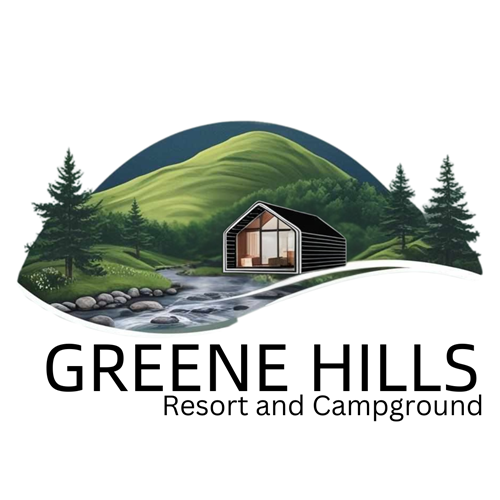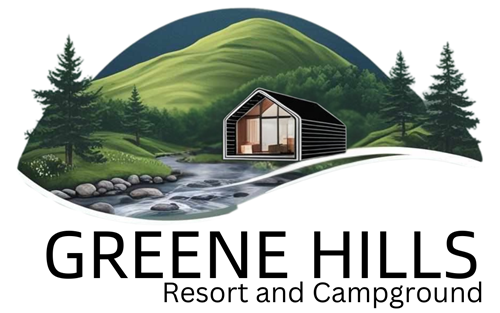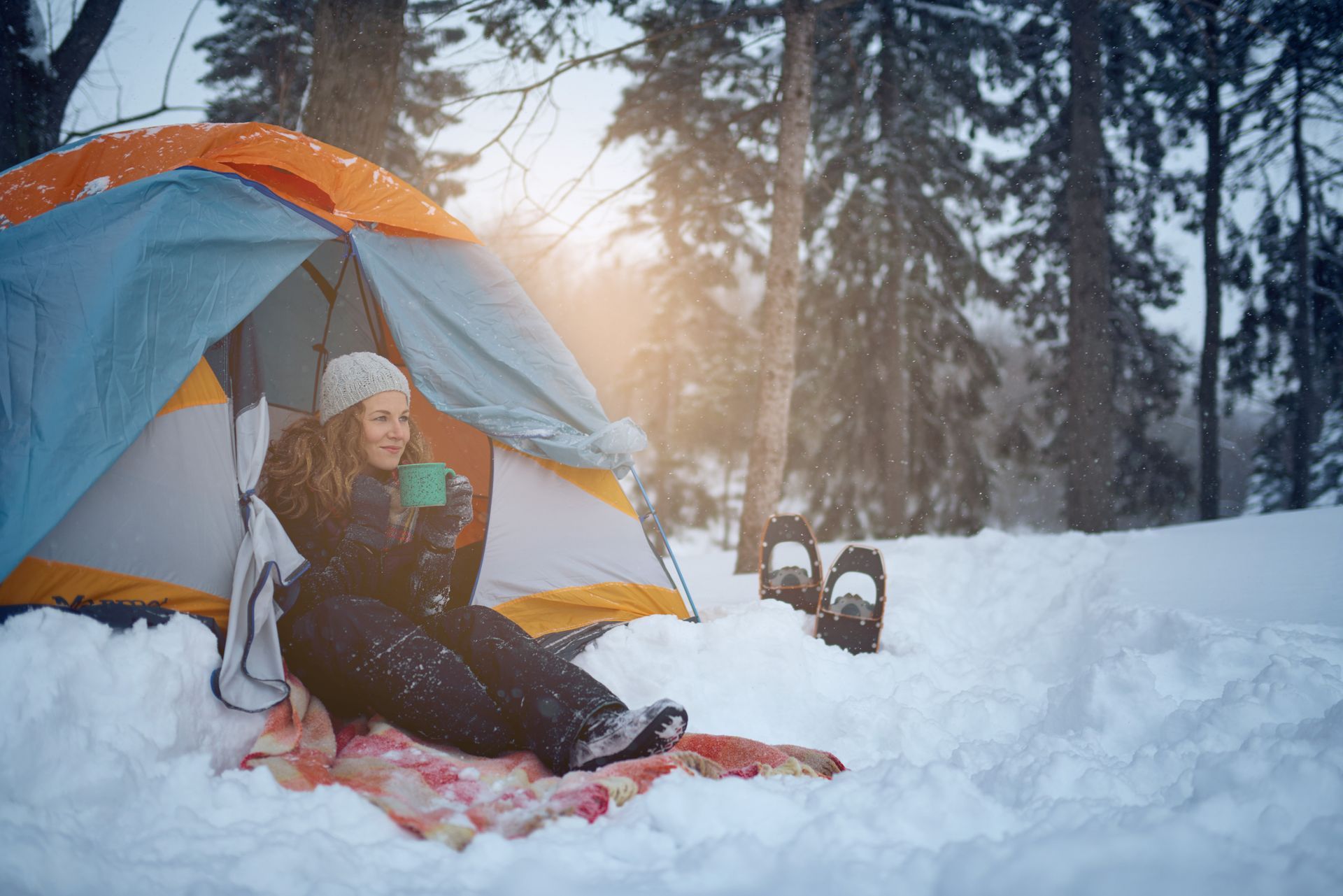
Winter Camping: Your Guide to Camping in Cold Weather
When the snow starts to fall, many campers put away their sleeping bags for the season. The frosty air may make some want to stay indoors, but the winter landscape can offer a wonderful camping experience for those willing to brave the cold. If you’re looking to give winter camping a try, start with reading our guide to cold-weather camping.
Who is this for?
New campers looking for tips, and camping enthusiasts looking to expand their camping season into the winter months.
Jump to Section:
Choosing a Location
Location is always an important factor when it comes to camping, but it is even more so in winter. Many campgrounds close for the winter, which can severely limit your options. Furthermore, not all campgrounds are created equal. It’s important to make sure the location you’re choosing has all the necessary
accommodations and amenities to ensure a fun, and safe, experience– especially during winter.
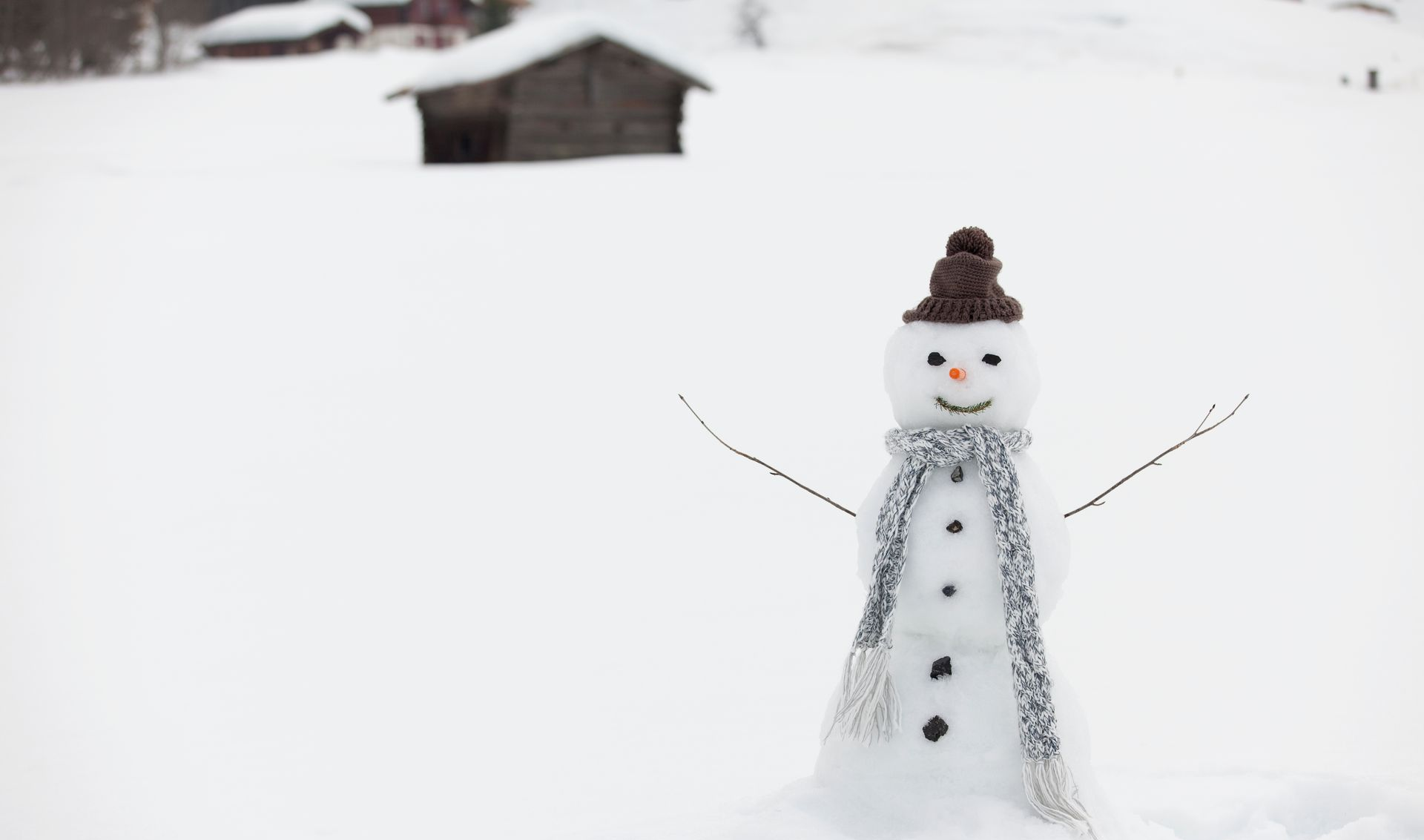
Tent Camping:
While many campgrounds close their grounds in winter, tent camping is 100% possible with the right location, equipment, and attitude. Here are a few tent-specific tips:
- Finding a site: Make sure the campground is open for tent-camping in winter. Then choose a camping spot that offers some shelter from the wind. A spot surrounded by trees is perfect!
- Secure your tent: Metal tent stakes and weights are your friend in the winter. Heavy-duty stakes are more likely to push through the frozen ground, while tent weights offer extra resistance to winter winds.
- Winter Gear: Get a tent, sleeping bag, and clothing (including boots) rated for winter temperatures. This is vital to your safety and comfort. Consider bringing extra liners for extra warmth in subfreezing temperatures.
- Insulation: Insulate your sleeping spot with extra padding. Even with a warm sleeping bag, this is a crucial step to prevent the cold ground from stealing your body heat.
- Ventilation: Make sure your tent has some ventilation to prevent condensation from building up inside, as this could make everything damp and cold.
- Extra Lights: It gets darker earlier in the winter, so make sure you bring extra lanterns, flashlights, or string lights for visibility.
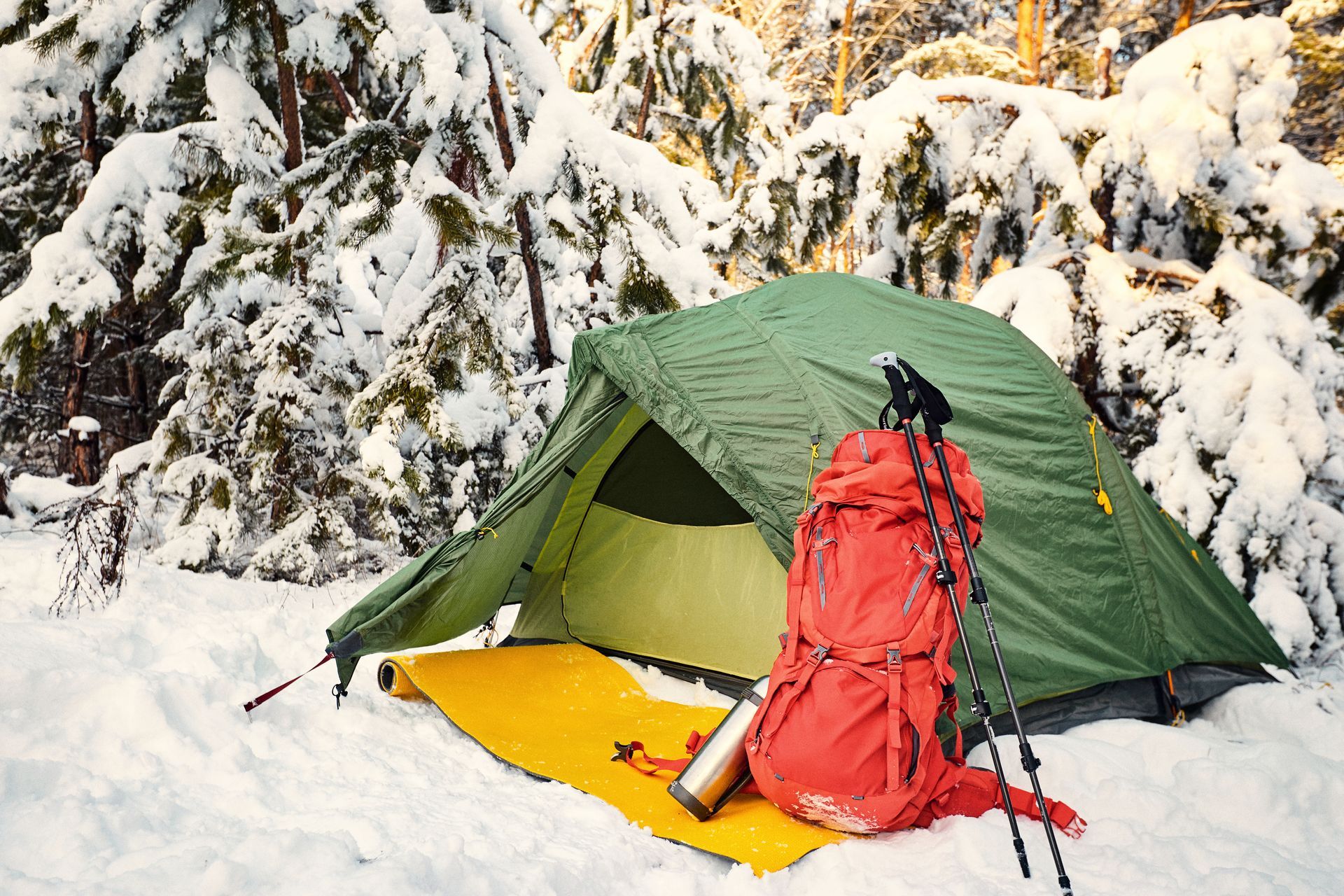
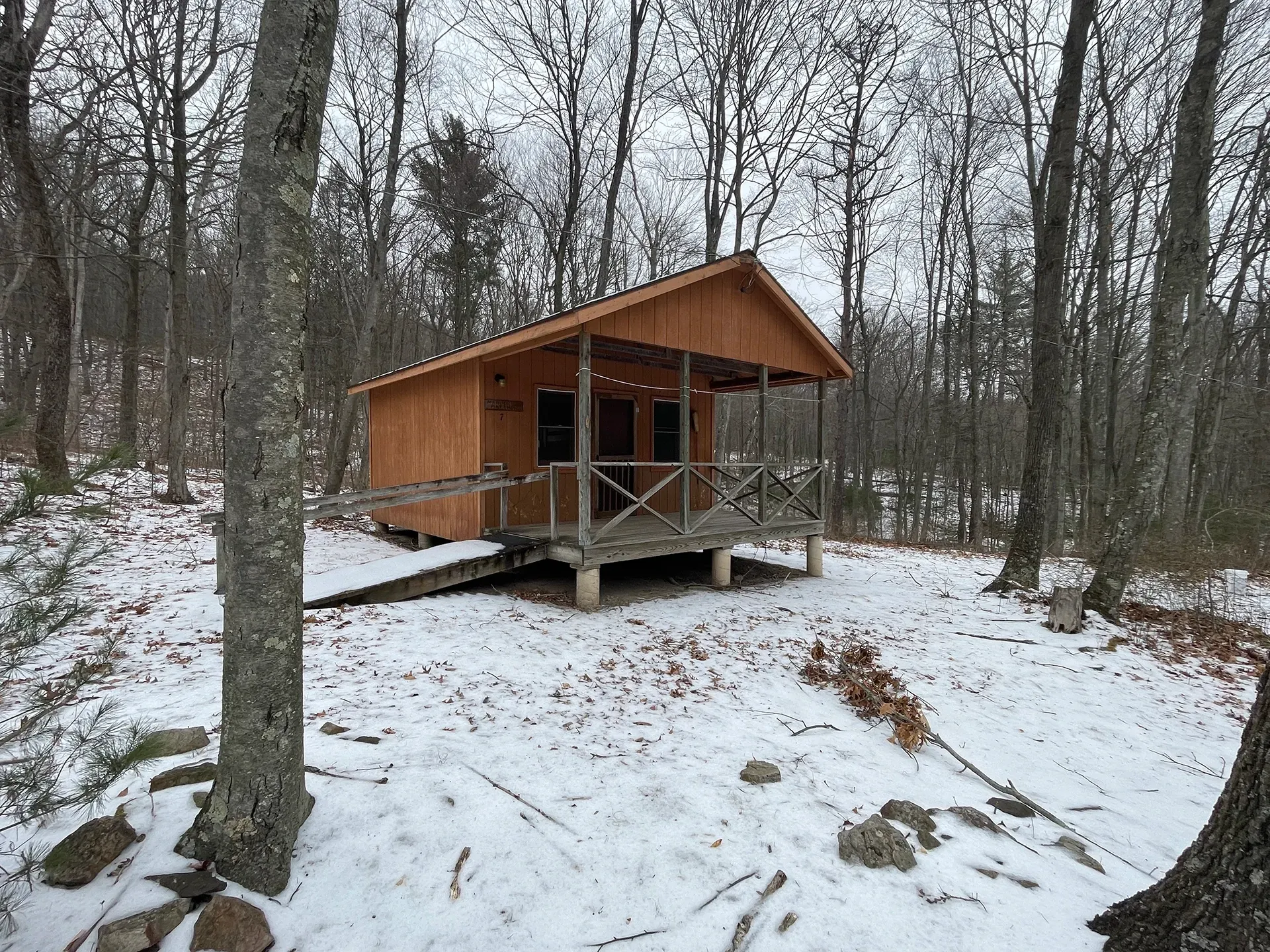
Cabins
Cabins are the classic choice for winter camping. Whether the cabin is a luxurious A-frame or a rugged lodge, cabins offer sturdy protection from the elements. Here are some tips for a cozy cabin stay.
- Bring a mat: It’s almost impossible not to track snow and ice inside after exploring. Bring a mat so you can take your shoes off at the door to keep the floors clean and dry.
- Pack “Inside” clothes: Similar to the last tip, your outside gear will get wet. Bring separate “inside” sweaters, socks or slippers to stay warm in the cabin.
- Warm Beverages: Pack your favorite coffee, tea, or cider for mornings and evenings. Not only is this a practical way to warm up, it’s a tasty treat to make your trip extra special
- Portable heaters: Most glamping cabins are heated, but extra heating never hurts. Portable heating units are often worth the investment to keep things cozy.
Amenities:
Available amenities vary greatly depending on the campground’s location and time of year. Here are some amenities you’ll want to research before you go.
- Running water: Most campground facilities do have running water, but availability may be limited in winter due to frozen waterlines. Call ahead to check on seasonal availability.
- Firepits and Wood: Again, most facilities provide firepits at each site, but snow may make finding dry wood a challenge. Call to see if wood is available on site, or if you’ll need to bring your own dry supply.
- Emergency Facilities: Unexpected blizzard conditions may arise. Make sure the campground has an on-site office available for emergencies.
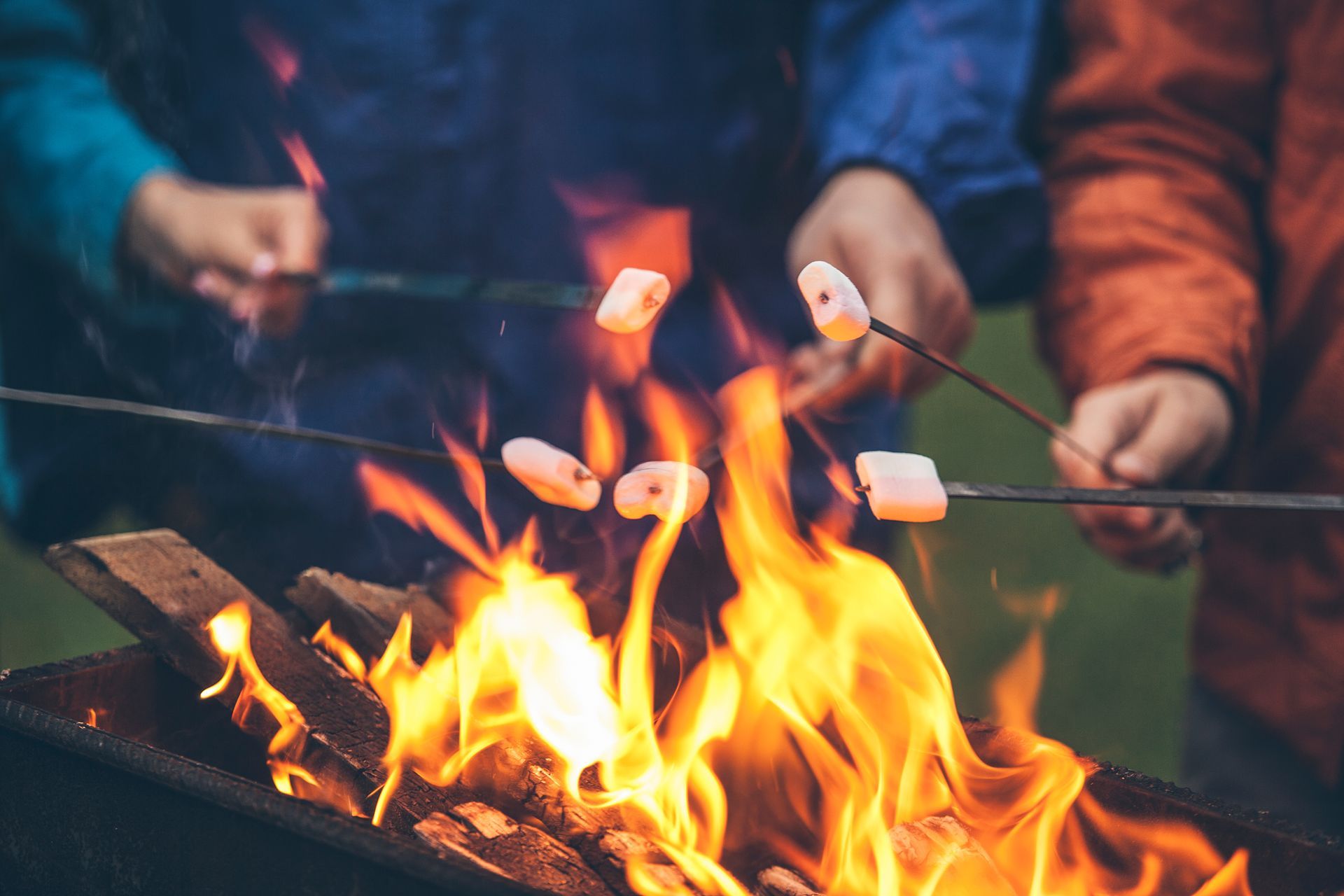
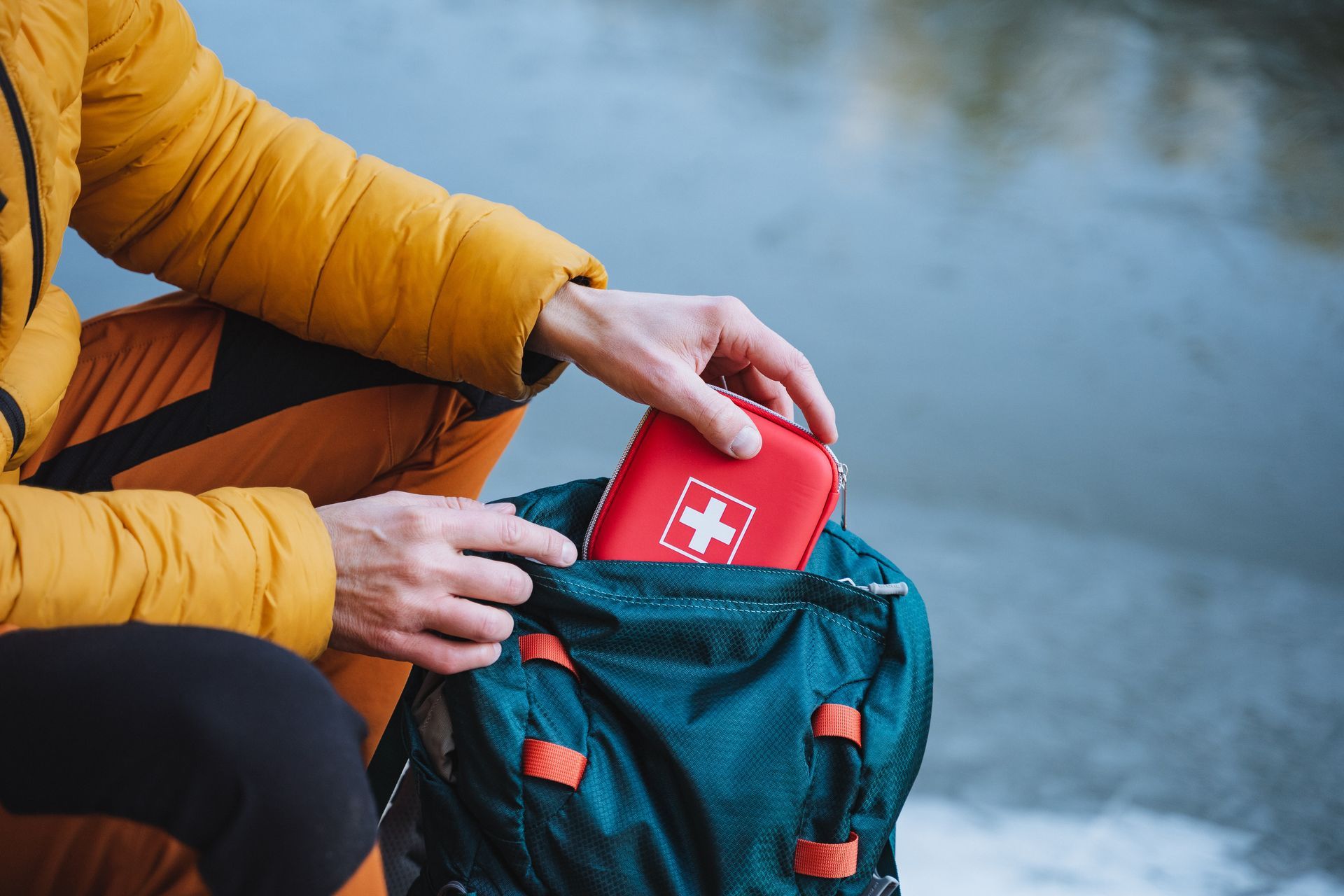
Winter Safety and First Aid
Winter camping comes with its own risks and rewards. The ice and snow are a playground for winter sports like skiing and skating. They also create stunning landscapes for photographers or those looking for a quiet escape. But winter is as dangerous as it is beautiful. As such, it’s important to know some basic safety and first aid principles before you explore.
Tips for Winter Walking
Snow and ice are slippery, and slippery grounds increase your risk of falls. While a small spill may not seem like a big deal, a bad landing could cause serious injury. Here are some safety and first aid tips for snowy grounds.
Tread Carefully:
- Heavy Tread: Wear shoes with deep tread for traction.
- Watch for Ice: Watch where you step, and make note of icy patches so you can avoid them later.
- Walk Like a Penguin: Keep your center of gravity over your feet, keep your knees slightly bent, and take small steps with your feet flat. It sounds silly but it works!
- How to Fall: Your goal when falling is to absorb the impact safely. Keep your limbs loose and bent, relax and roll into the fall, and try to land on your side or bottom. This should help you avoid sprains and fractures.
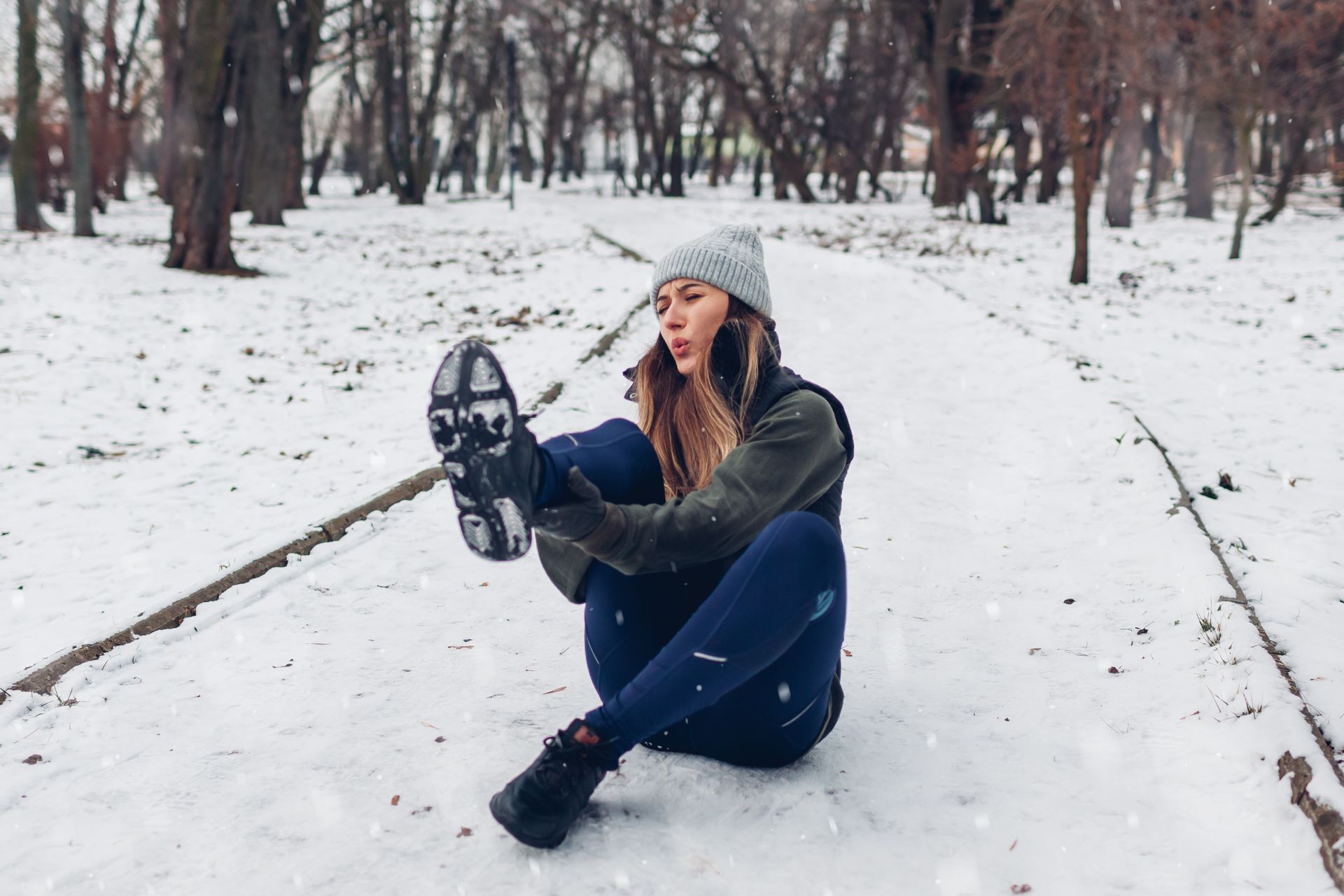
Treating the Chills
Staying warm isn’t just for your comfort. It’s vital for your safety. Hypothermia is no joke. It’s a dangerous, even deadly, condition that can sneak up on you unexpectedly. We’ve already shared some tips to help you set up warm accommodations for winter camping. Now let’s discuss how to prevent, recognize, and treat hypothermia.
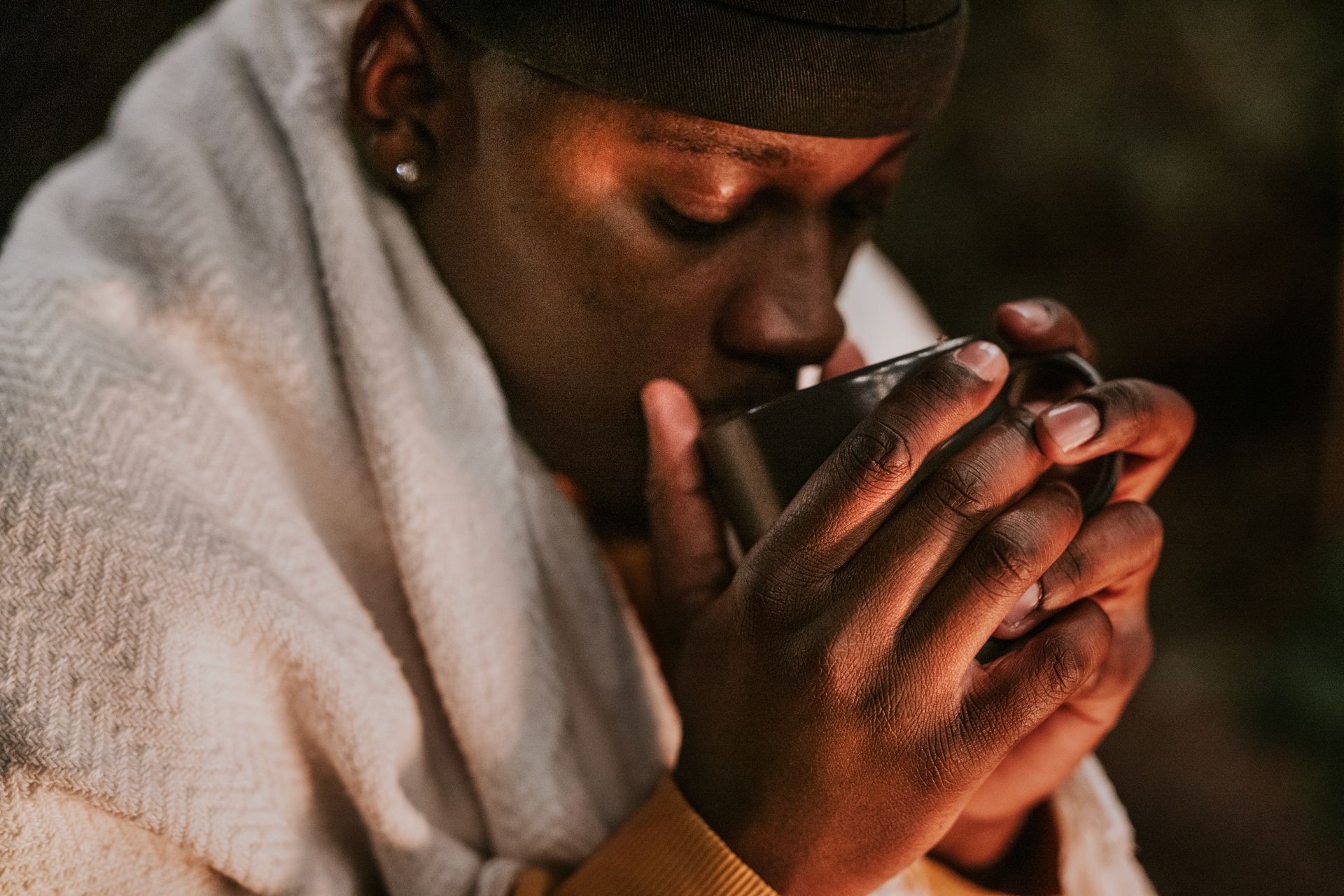
Preventing Hypothermia:
- Wear Layers: Your skin should not be exposed to the winter air, especially the extremities. Wear layers! Extra socks, layer shirts and jackets, wear hats, scarves, and gloves so your entire body is covered.
- Stay Dry: Water is one of the worst offenders when it comes to hypothermia, because water pulls heat away from your body faster than air. Wear layers to prevent moisture from reaching your skin, and change out of wet clothing as soon as possible.
- Take Breaks:
Take breaks from exploring the outdoors by going inside to warm up. It can be hard to notice the cold when you’re having fun, so scheduling breaks to thaw out is important for safety.
Recognizing the Symptoms:
- Shivering
- Feeling exhausted/sleepy
- Fumbling hands
- Slurred speech
- Confusion/memory trouble
- Skin is cold to touch
- Changes in color (pale skin, bluish tint, etc)
- In extreme cases: weak pulse, slow breathing, loss of consciousness, seizures
How to Treat Hypothermia:
- Find Shelter: Get inside as quickly as possible. Preferably a well-insulated location.
- Remove Wet Clothing: Remove ALL wet clothing from the individual, even if that means stripping them down to bare skin.
- Warm the Body Slowly: Layer on dry clothing and blankets. Cover the entire body, including the head. Share body heat if possible
- Drink Warm Beverages: Warm drinks can help increase body temperature, but you should avoid alcohol. Also, do not try to force an unconscious person to drink.
- Seek Medical Attention: If a person has severe hypothermia, seek medical attention immediately. Keep the person warm and perform CPR if needed.
Buddy System
The buddy system is a golden rule of outdoor recreation of all kinds, and for good reason. Winter is not the time for solo exploration, so follow these basic guidelines.
- Stay Close to Camp: Stay within easy reach of your campsite. You don’t want to get lost when temperatures start to drop.
- Bring a Buddy: If you want to explore, don’t go alone. If you get injured or lost, having another person to provide first aid could save your life.
- Share Your Location: Always tell people where you are going and when to expect your return. This is so your party knows where to look if you actually go missing.
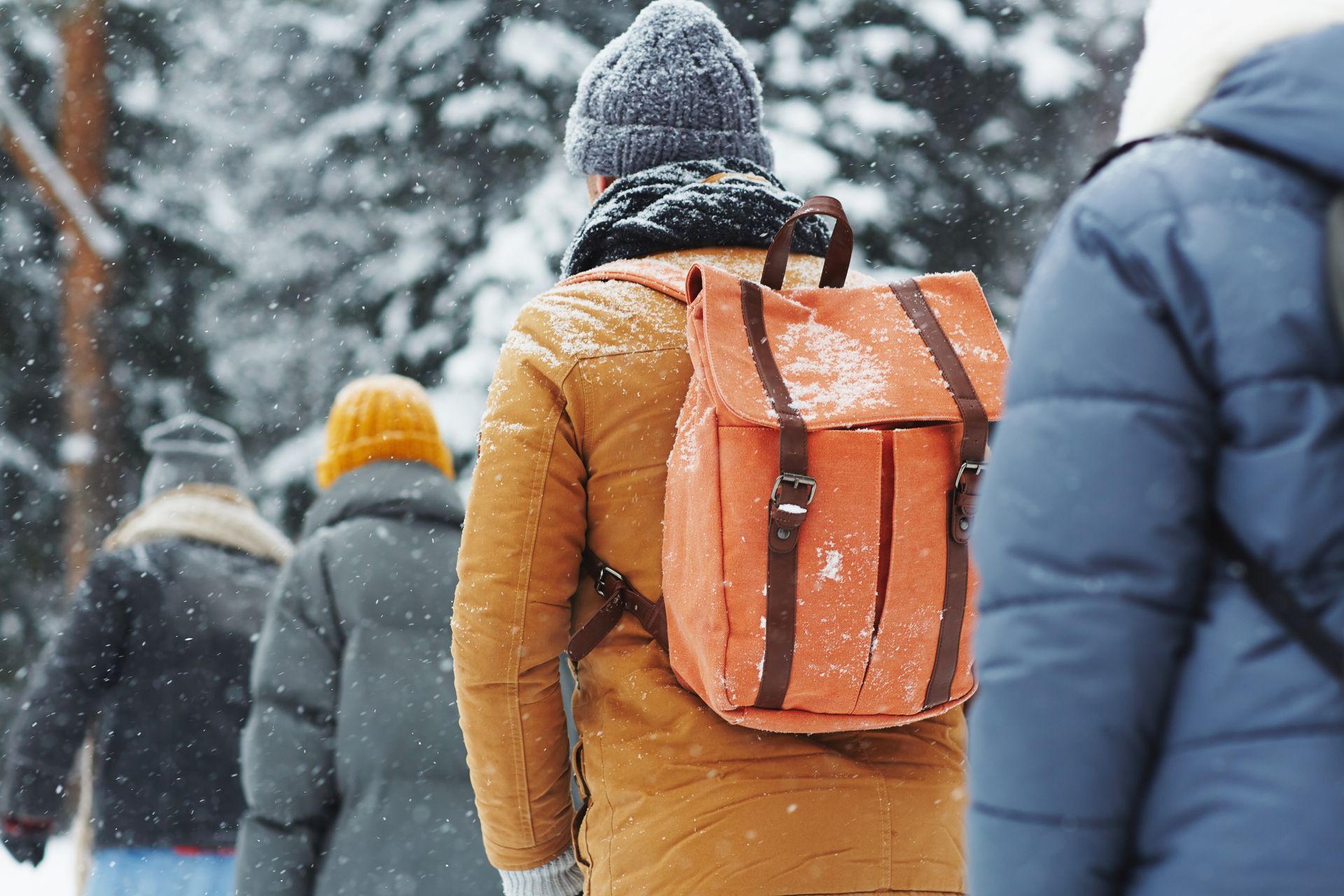
Watch the Weather
Keep a close eye on the forecast and current weather conditions. Storms can occur quickly, dropping temperatures to dangerous lows. If a storm is on its way, do the following:
- Cancel the Trip: There’s no shame in going home early if the weather is turning. You can always try again another time.
- Seek Shelter: If you’re away from camp, seek nearby shelter. An office or outpost is ideal, but a cave will do in a pinch.
- Hunker Down: If you’re at camp, hunker down. Turn on the emergency lights, pile on the blankets, and settle in. Don’t leave your shelter until the storm passes.
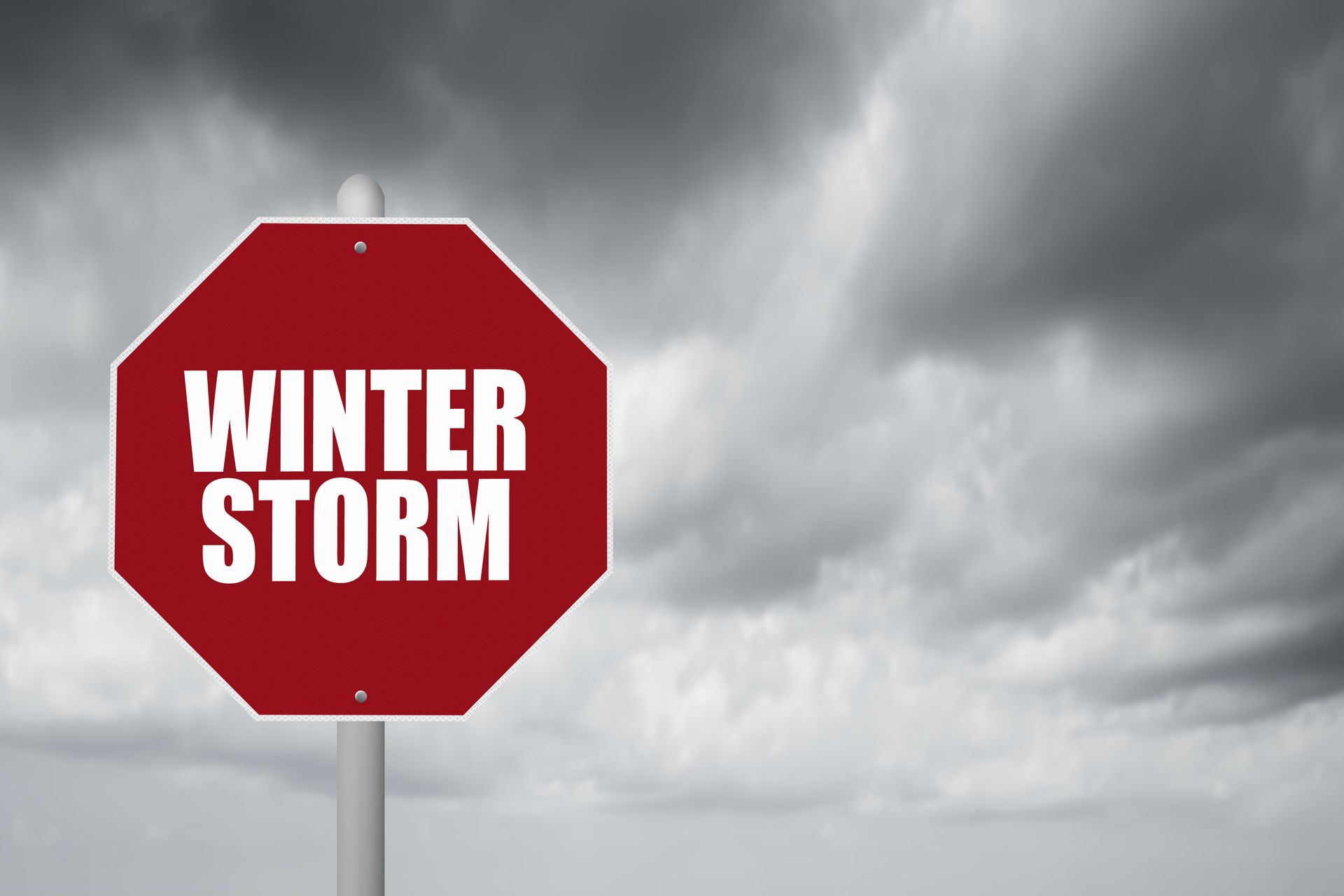
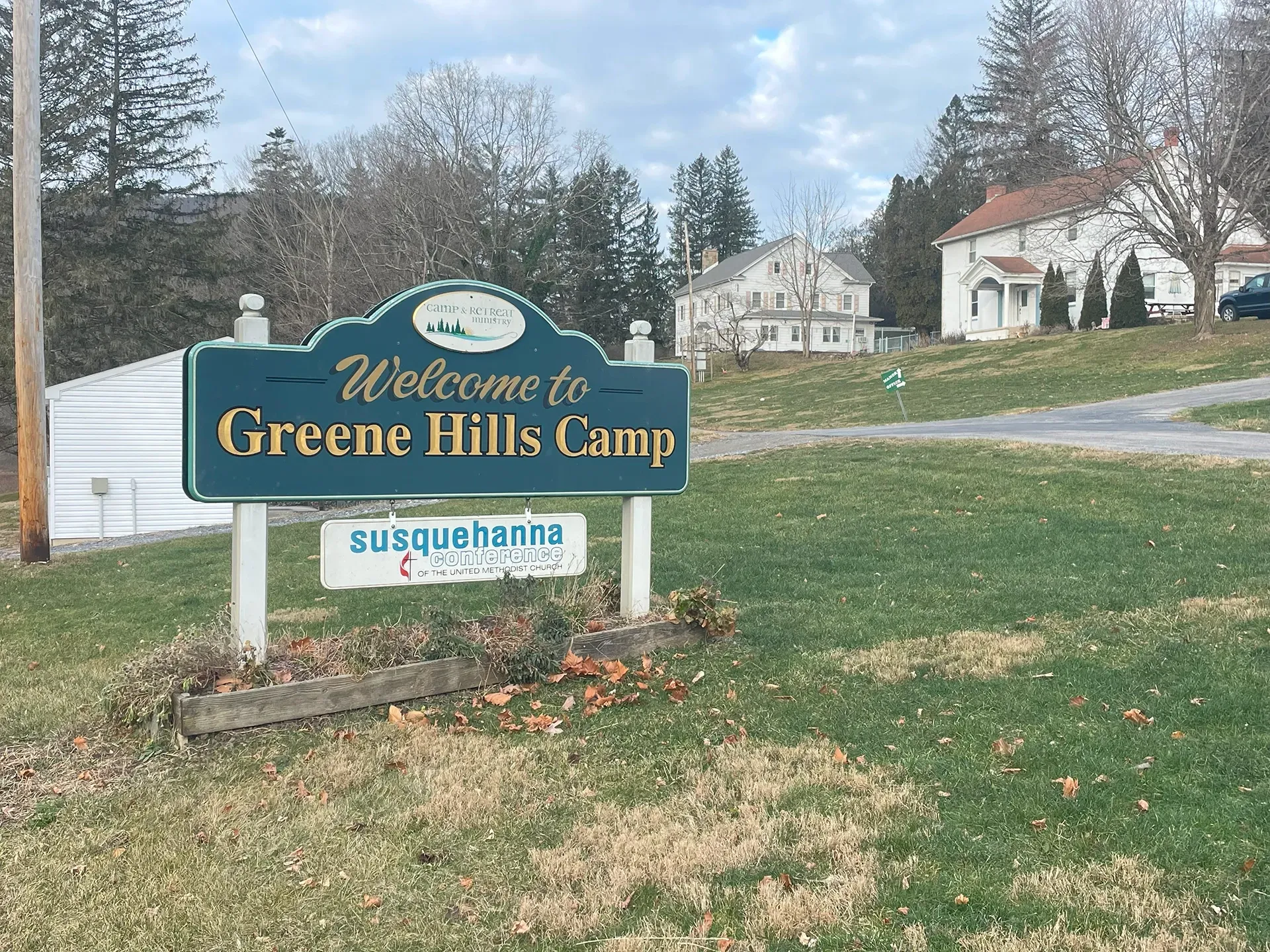
Winter Camping at Greene Hills Campground and Resort
If you are looking for the best winter camping in Alexandria, stay with us at Greene Hills Campground and Resort! Though our RV sites and primitive cabins are closed, the rest of our grounds are open all year-round! Whether you’re looking for a rustic tent site among the trees or a cozy glamping cabin with a private hot tub, we have a place for you.
Not a fan of camping? No worries. You can enjoy the beautiful winter scenery from your private suite at the Greene Hills Manor.
Come enjoy the snowy landscape this winter when you
book your stay at Greene Hills Campground!
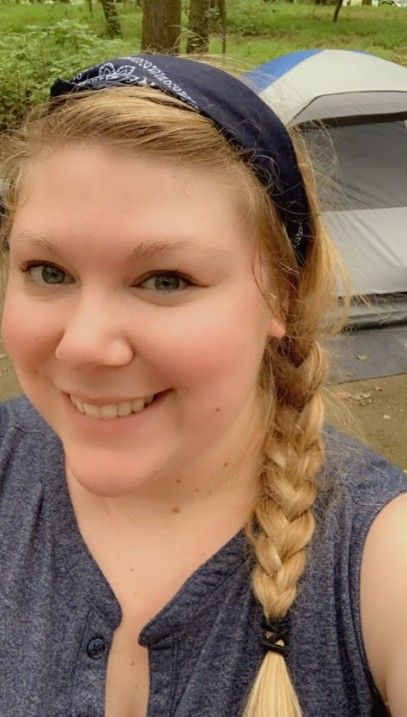
About the Author
Amanda Orban is a local teacher and campground manager in Pennsylvania. In her free time, she loves nothing more than pitching a tent under the stars, hitting scenic trails, and cheering on the Nittany Lions at Penn State.
